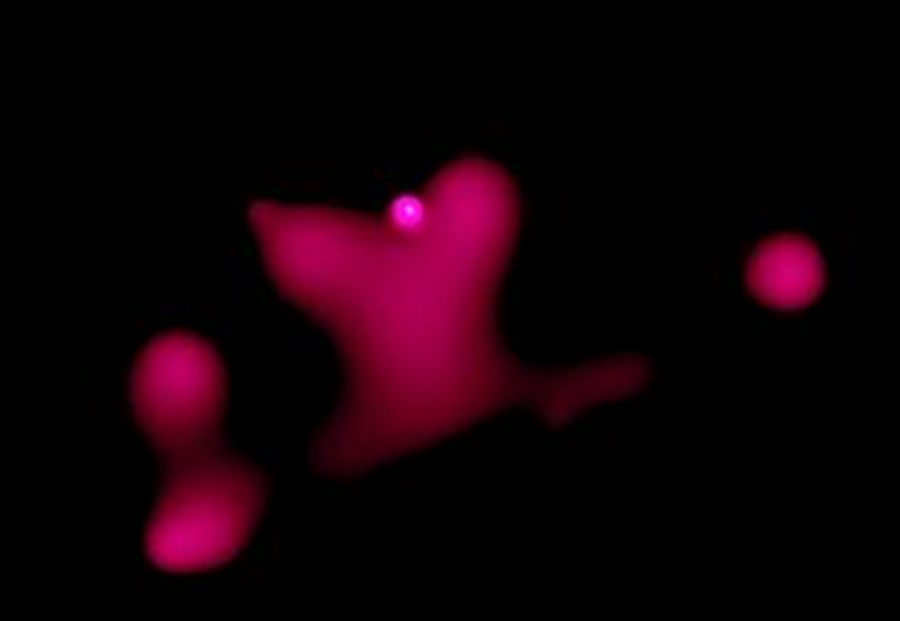
 Credit: NASA/CXC/U.Liege/Y.Nazé et al.
Credit: NASA/CXC/U.Liege/Y.Nazé et al.
Truly Trust Your Heart
As a couple of old stars swing around each other, doing Newton's gravitational tango, their warm breath generates intense heat. These stars, the bright red dot at the top of the heart-shaped cloud of gas in the Chandra X-ray Telescope image above, are a binary system called HD 5980 located in the Small Magellanic Cloud, the Milky Way's companion. The couple in HD 5980 are a pair of evolved massive stars with strong stellar winds, and unstable to boot. The light-driven winds which blow off their surfaces meet in between the two and release kinetic energy as heat, raising the temperature in the collision to millions of degrees. This hot gas generates the enormous amounts of X-radiation seen by Chandra. The large glowing heart-shaped X-ray nebula surrounding HD 5980 has a somewhat mysterious origin. It could have been produced a sudden outburst of HD 5980 when the stars were younger and more temperamental. Or it may be the final valentine left behind by the supernova of another hot-headed star in a volatile, three-body encounter.
Published: April 7, 2025
<
HEA Dictionary ● Archive
● Search HEAPOW
● Other Languages
● HEAPOW on Facebook
● Download all Images
● Education ● HEAD
>
Each week the HEASARC
brings you new, exciting and beautiful images from X-ray and Gamma ray
astronomy. Check back each week and be sure to check out the HEAPOW archive!
Last modified Monday, 07-Apr-2025 16:47:59 EDT


